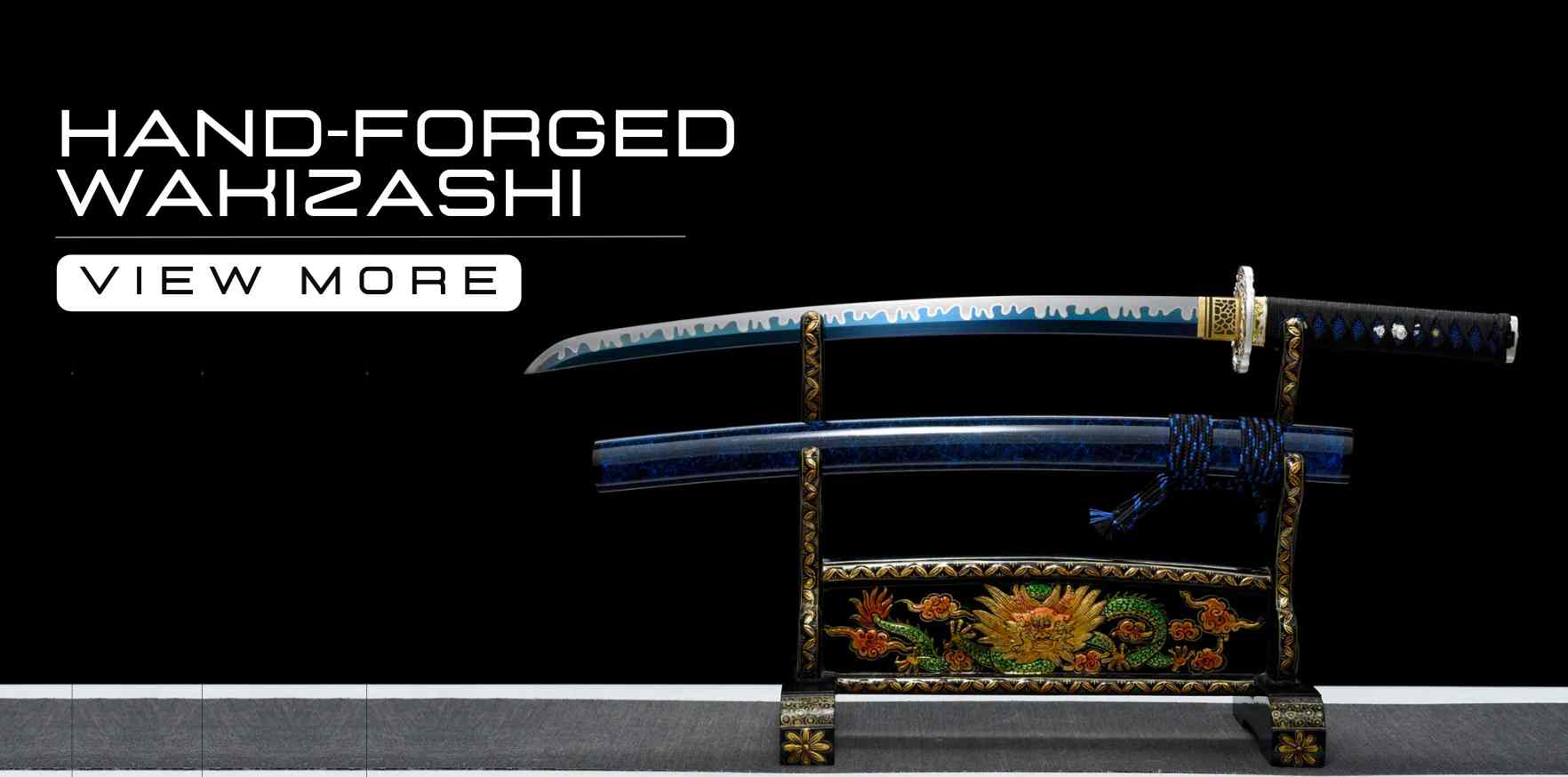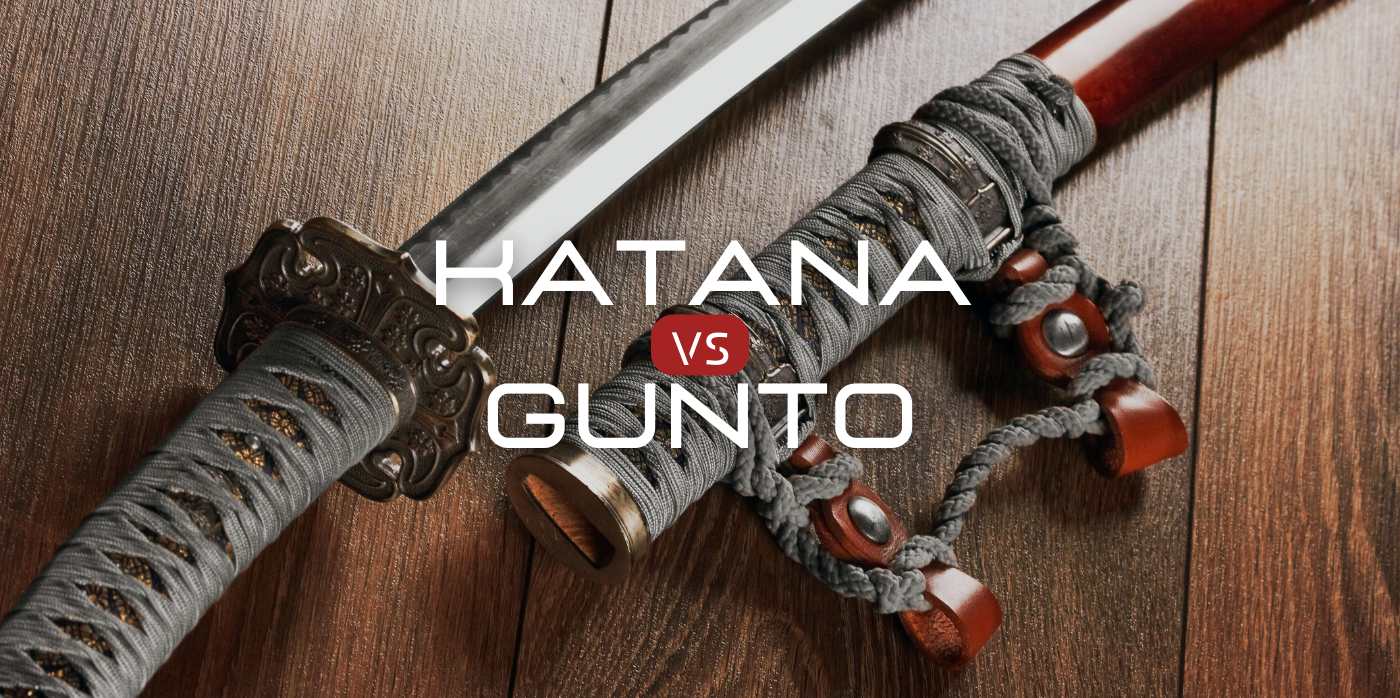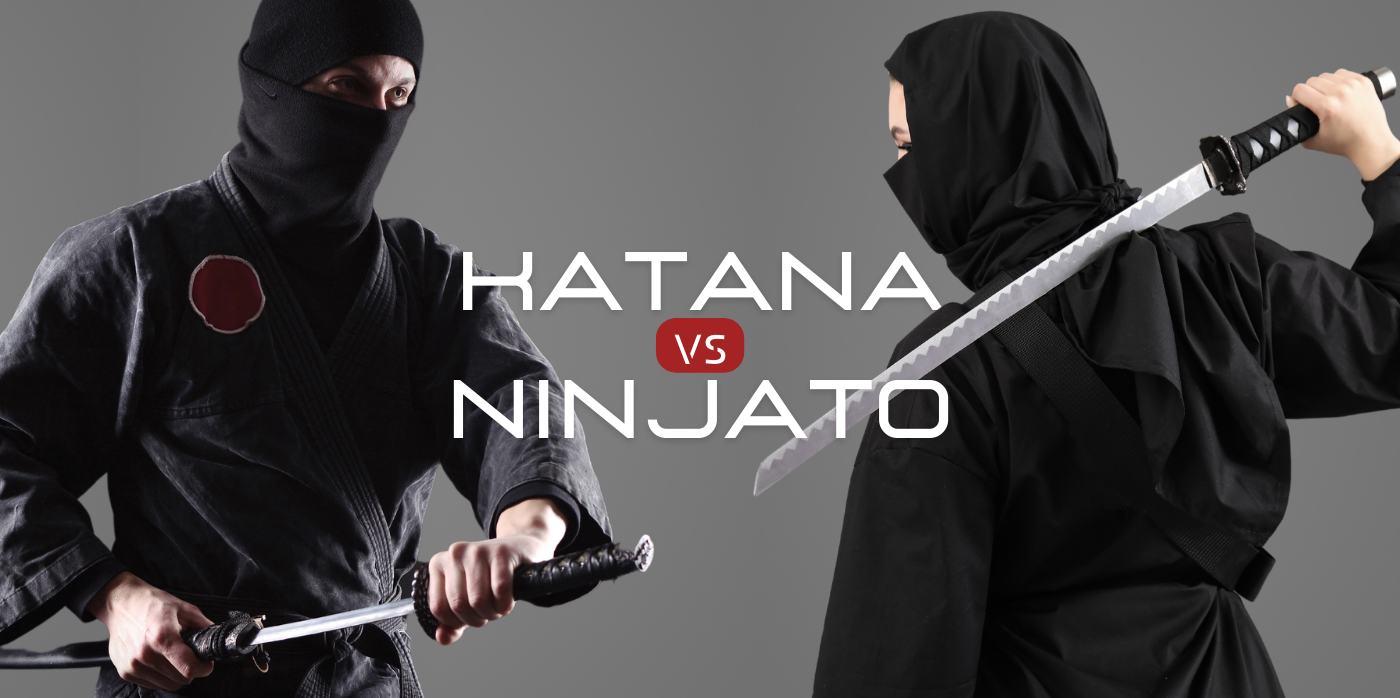Among the most recognizable Japanese Sword, the Katana and the Wakizashi are two weapons intrinsic to samurai culture. But what are the differences between these swords? Let's take a deep dive into the world of Wakizashi vs Katana and explore their unique characteristics.
1. Understanding the katana and the wakizashi
The Katana, iconic in its sleek, single-edged design, was the primary weapon of the Samurai. Renowned for its deadly efficiency and exquisite craftsmanship, it has found its place in many a tale of battle and bravery.
On the other hand, the Wakizashi (脇差), shorter and often considered a sidearm, played an equally pivotal role in the life of a Samurai. This versatile blade served multiple purposes, from close-quarter combat to a tool for ritual suicide, known as Seppuku.
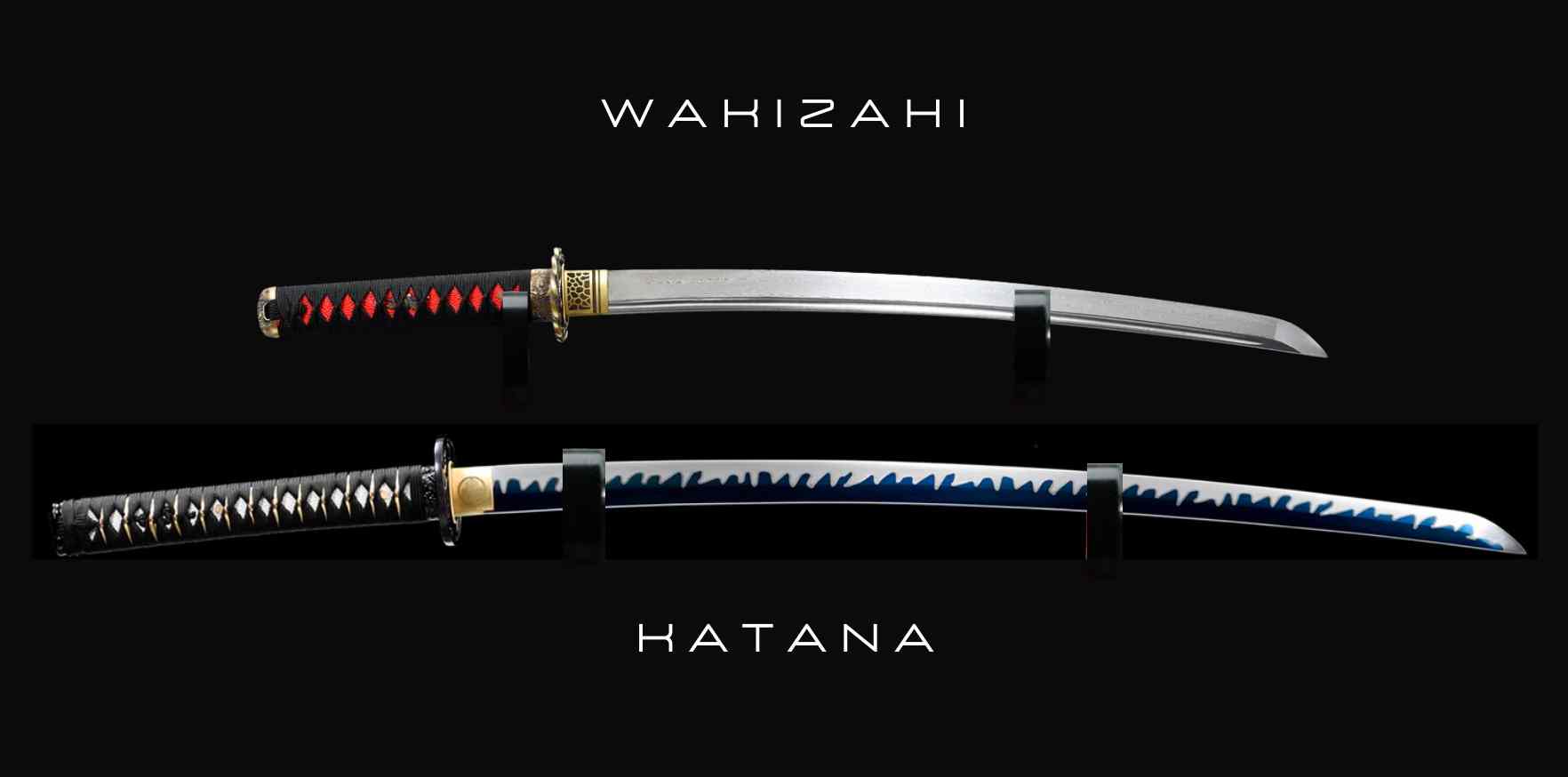
2. Katana Craftsmanship Vs Wakizashi
The Katana, widely revered for its aesthetic allure, stands as a remarkable tribute to the mastery of its creator. The centuries-old art of its construction entails a complex succession of procedures, from precise heating to meticulous hammering, and a repeated process of folding, ultimately resulting in a blade that boasts an impressive balance of keen sharpness and remarkable durability.
The Wakizashi, albeit smaller, does not lag in craftsmanship. Made with similar processes as the Katana, the Wakizashi shares the beautiful curvature and razor-sharp edge of its larger counterpart. However, it requires a different level of expertise to attain the balance and precision necessary in a shorter blade.
3. Katana Design Vs Wakizashi
Sword Length and Weight
At first glance, the Katana and Wakizashi may appear very similar. They share the same single-edged, curved blade design typical of Japanese swords. Yet, the primary distinction stems from their dimensions.
The Katana, customarily ranging from 60-73 cm (approximately 23.6-28.7 inches). Its length provides greater reach and cutting power, essential for open battlefield combat.
Conversely, the Wakizashi, with a blade length between 30-60 cm (11.8-23.6 inches), is significantly shorter. This size makes it suitable for one-handed use and effective in closer, indoor combat situations.

Blade Design and Geometry
Both swords feature a curved, single-edged blade, but they vary in terms of blade geometry. The Katana's blade is typically long and slender, optimized for swift, precise cuts, while the Wakizashi has a somewhat broader and more robust blade, built for versatility and durability.
Sword Balance and Swordsmanship
The Katana's longer blade provides a distinct balance point further from the hilt, making it excellent for sweeping attacks. Conversely, the Wakizashi's compact design and closer balance point allow for faster, reactive movements, making it an excellent choice for Japanese martial arts like Kenjutsu and Kendo.
4. Katana Usage and Practicality Vs Wakizashi
Historically, the Katana was the preferred weapon in open warfare. Its length provided reach, while its sharpness and strength could deliver devastating blows to an adversary. The Katana techniques predominantly involve large, sweeping movements, capitalizing on the blade's length and sharpness.
The Wakizashi, however, offered practical advantages in certain scenarios. Its smaller size made it a more convenient choice for indoor fighting. Also, as a sidearm, it served as a backup when the Samurai's Katana was inaccessible. The Wakizashi techniques often involve short, swift motions intended to exploit openings in an opponent's defense, complementing the Katana's longer range when used together in the Daisho combat style.
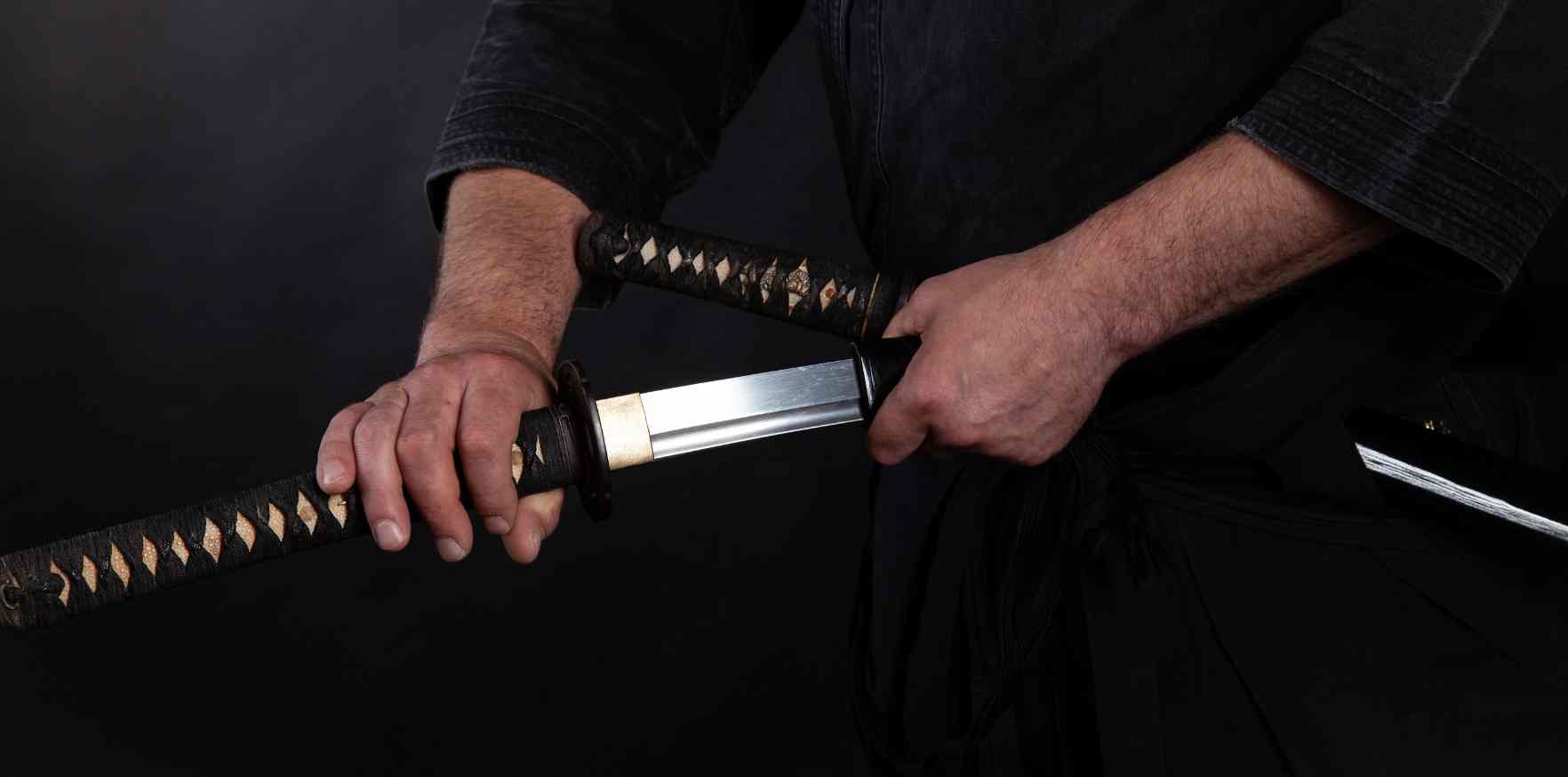
Would a Wakizashi or a Katana Have the Advantage
In a one-on-one comparison, the Katana, with its greater reach and power, might seem superior. Yet, the efficacy of a weapon largely depends on its environment. While the Katana may have the upper hand in an expansive battlefield, the Wakizashi, due to its more compact dimensions, could offer superior advantages in confined areas.
Can the Wakizashi and Katana be Used Together in Combat
The combination of the Katana and Wakizashi, known as the Daisho, was more than a status symbol for the Samurai - it was a versatile combat setup. In certain fighting styles, the Samurai could wield the Katana and Wakizashi simultaneously, using the longer blade for offensive strikes and the shorter for defense and counterattacks. Together, the katana and wakizashi represented the Samurai's honor and preparedness for any eventuality. The Katana, being the primary weapon, and the Wakizashi, serving as a backup and tool for Seppuku.
Katana Sword Maintenance Vs Wakizashi
Just like any piece of steel, both the Katana and Wakizashi require regular maintenance to prevent rust and retain their edge. This involves cleaning, oiling, and careful storage.
Katana Historical and Cultural Significance Vs Wakizashi
The Katana, while holding pragmatic utility, also carries profound cultural and emblematic importance in Japan. Often deemed the "spirit of the Samurai," it encapsulates the samurai's valor, bravery, and sense of responsibility.
The Wakizashi holds a unique cultural significance as well. It was used in the solemn act of Seppuku, a ritual suicide performed by Samurai under certain circumstances. This gave the Wakizashi an intimate, personal value to the Samurai.
Summary:
Main Differences and Similarities Between Katana and Wakizashi
Main Differences between Katana and Wakizashi
- Size and Length: The Katana is notably larger and longer, usually measuring 60-73cm in blade length (23.6-28.7"), while the Wakizashi is shorter, ranging from 30-60cm (11.8-23.6").
- Usage in Combat: The Katana, with its longer blade, is designed for open battlefield warfare. The Wakizashi, however, is more suited for close-quarters combat, indoor fighting, and used as a secondary weapon.
- Symbolic Significance: The Katana is seen as the primary symbol of the Samurai, representing their honor and courage. The Wakizashi, while also significant, has a distinct role in the Samurai's life as the instrument for Seppuku (ritual suicide).
Main Similarities between Katana and Wakizashi
- Design: Both the Katana and Wakizashi share a similar single-edged, curved blade design and were crafted following the same meticulous process.
- Craftsmanship: Both the Katana and Wakizashi exemplify the exquisite Japanese craftsmanship, featuring a meticulously folded and tempered blade.
- Cultural Importance: Both swords were integral parts of the Samurai's Daisho - the pair of swords symbolizing the Samurai's status and honor.
- Samurai Code: Both the Katana and Wakizashi were carried by Samurai as part of their code, representing their readiness for combat and ritual.
- Martial Arts Practices: Both swords are still used today in various forms of martial arts practices, like Kenjutsu and Kendo.
Conclusion
Delving into the captivating realm of Japanese swords, it becomes clear that each blade holds its own distinct significance, extending beyond mere warfare to become part of the broader cultural tapestry.
Both the Katana and Wakizashi, each carrying their unique traits, were more than mere instruments of war for the Samurai. They were the physical manifestations of their honor, bravery, and their unflinching readiness to tackle any obstacle. Although the Katana may enjoy more widespread recognition as the emblem of the Samurai, the importance and versatility of the Wakizashi in a Samurai's existence should never be downplayed.
In the comparison of Wakizashi vs Katana, it's not about which sword is superior. Instead, it is about how these two swords, each with its unique attributes and uses, come together to form a comprehensive arsenal that represented the Samurai's way of life.




